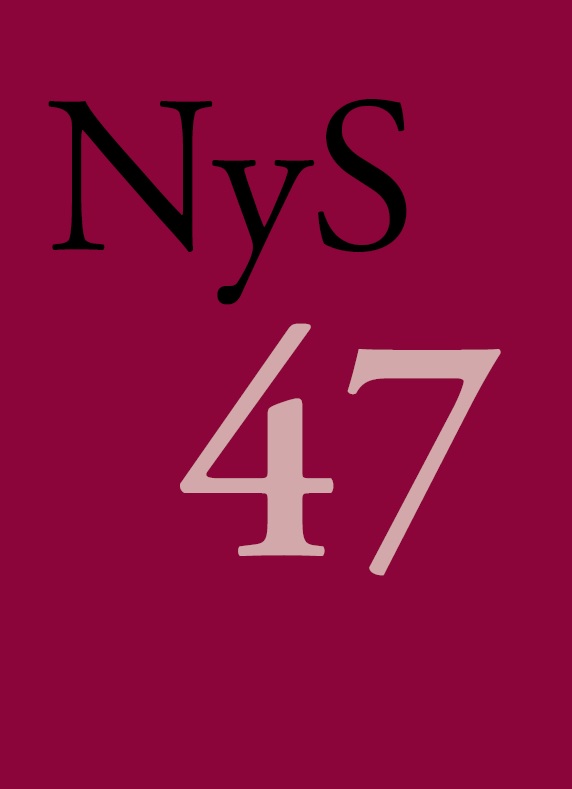Grammatikken i baggrunden – opmærksomhed under læsning
DOI:
https://doi.org/10.7146/nys.v47i47.19918Abstract
This article reports on a psycholinguistic study of two sets of linguistic mechanisms that are employed by language users to signal the intended prioritization of attention within complex messages: focus and the lexicon-grammar contrast. The study is one of the first experimental studies of the lexicon-grammar contrast which is theoretically anchored and not merely based on an intuition-based understanding of grammar. The focus of a sentence is indicated by means of focus markers, e.g. cleft constructions and focus particles. There is a general consensus, supported by experimental results, that focus is involved in the above-mentioned form of prioritization. On the other hand, the lexicon-grammar contrast has only recently been related to prioritization of attention. A recent theory of grammar (Boye and Harder 2012) suggests that grammatical elements, such as auxiliaries and articles, are low-priority items that only serve an ancillary purpose. The reported study is centered on a letter detection task with 84 Danish participants, in which structural status (lexical vs. grammatical) and focal status (focus vs. non-focus) of elements were manipulated. While the focus manipulation did not affect error detection rates, structural status (as defined by Boye and Harder 2012) did: Grammatical elements attracted less attention (generated significantly more detection errors) than their lexical counterparts. A post hoc mixed model analysis also showed a significant interaction between focal and structural status, but the robustness and exact nature of this interaction effect is a question for future research.Downloads
Published
How to Cite
Issue
Section
License
Forfatteren/forfatterne og NyS har ophavsret til de artikler og anmeldelser der bringes i tidsskriftet. NyS har ophavsretten til den udgivne version af tidsskriftet. Forfatteren har ophavsretten til sin egen tekst. Forfattere kan arkivere den publicerede artikel på deres institutions forskningsarkiv (Institutional Repository) eller en privat hjemmeside, når forfatteren samtidig linker til artiklen med den officielle DOI.
For artikler publiceret i NyS tillades at læsere kan downloade, kopiere, udskrive, søge eller linke til og citere fra artikler til ethvert lovligt formål. Artikler kan frit deles og linkes til på forsknings- og undervisningsnetværk (så som Blackboard, Moodle, Canvas o.a.). Link foretrækkes fordi det giver oplysning om brug af tidsskriftets artikler, og fordi det anerkender tidsskriftets redaktionelle arbejde. NyS tillader ikke at læsere bruger artikler eller dele af dem i egne artikler uden at citere, eller at læsere på anden vis anvender dem til kommercielle formål.





